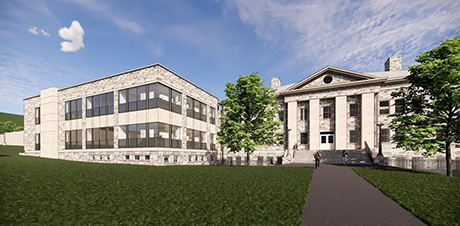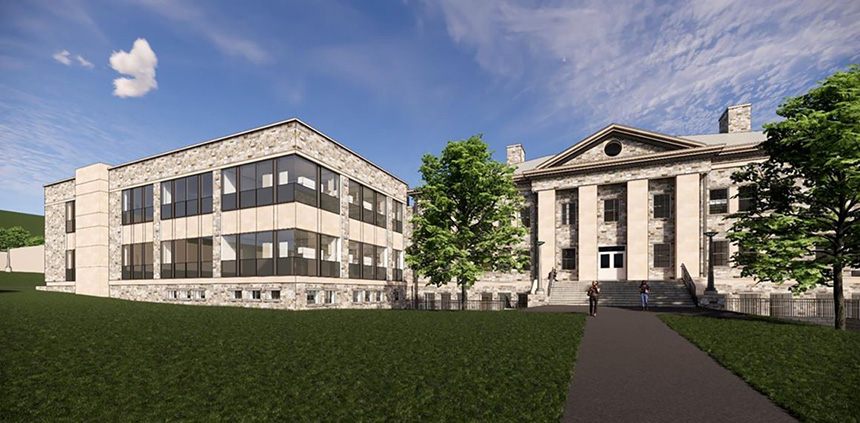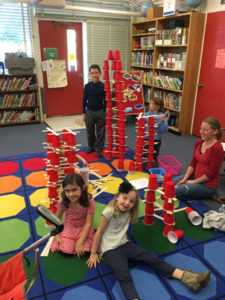Richard D. L. Fulton

Mount Saint Mary’s University (MSMU) launched its $50 million capital campaign. “Our Mission, Our Moment, Our Mount,” geared towards financing the School of Health Professions and investing in the Science, Technology Engineering, and Math (STEM) programs and facilities.
Mount President Timothy Trainor stated, “Our mission calls us to help our students find the intersection of their passion and talents and then shape their path to leading a life of significance,” adding, “We’re evolving in ways that provide new pathways that emphasize the Mount way – ethical and creative decision-making, compassionate care, and respect for all people.”
“Together we can achieve our campaign goals that position the Mount for the next 100 years and serve our community,” he stated.
Bob Brennan, MSMU Vice President for University Advancement, stated, “We are deeply grateful for the commitment our donors have made to the Our Mount campaign to this point,“ further noting, “Alumni, federal and state government, foundations and other friends of the Mount believe in our mission, leadership and vision for the future. This campaign will build on our success and continue our growth in the coming years.”
Donna Klinger, Executive Director of Communications, reported, “A major portion has already been committed toward the $50 million goal. The campaign is among the most ambitious and impactful fundraising efforts in the university’s 215-year history.”
Regarding the School of Health Professions (which will also include a Center for Clinician Well-Being) aspect of the fundraiser, that school will be made transformational for students, the university and Frederick County by helping students answer the call to serve and helping to bring about changes to patient and provider care, according to Klinger. “The school will evolve to include master’s level nursing and other healthcare programs,” she stated.
The Mount is partnering with the Daughters of Charity and that the Daughters have offered an “in-kind gift of a wing of St. Joseph Provincial House” for the School of Health, allowing the MSMU to “expand its footprint in Emmitsburg.’ Klinger said. The Daughters of Charity will offer mentors and scholarships, while Care for America will teach students how to care for underserved patients.
“This element of the program dovetails with the missions of the Mount and the Daughters by seeking to graduate healthcare providers who possess the desire to provide equitable and compassionate care and the ability to thrive in difficult work environments,” the Executive Director of Communications stated.
The campaign also focuses on $20 million in improvements to the university’s STEM facilities, which the university has outgrown,” Klinger said, adding, “The Mount has experienced significant growth in science and technology programs and the funds will be used to create state-of-the-art labs and teaching spaces to meet the demands of future learners.”
The three-story, 50,100 square-foot Coad Science Building, built in 1964, serves the School of Natural Science and Mathematics. Planned facilities’ improvements will commence with a 21,000-square-foot addition to the existing space that will house neuroscience, computational, and research labs as well as collaborative learning spaces.
The second phase will build additional science labs, classrooms, and research spaces. The third phase will focus on the renovation of the existing space in Coad, she stated.
The new classroom and lab spaces will be technology-rich, multi-use, flexible, and configurable for a variety of instructional formats and class sizes. Specific goals for the building addition include a design that promotes circulation and spontaneous interaction; is flexible and adaptable; and provides natural light where STEM students and faculty in action can see and be seen.
The additional space will also allow for increased programs with local STEM industry partners.
A third focus of the campaign addresses the recent growth and success of the Mount’s athletic programs. The university has doubled the number of athletes in its NCAA Division-I program in just six years and netted 17 conference titles and nine NCAA tournament appearances in that same period.



